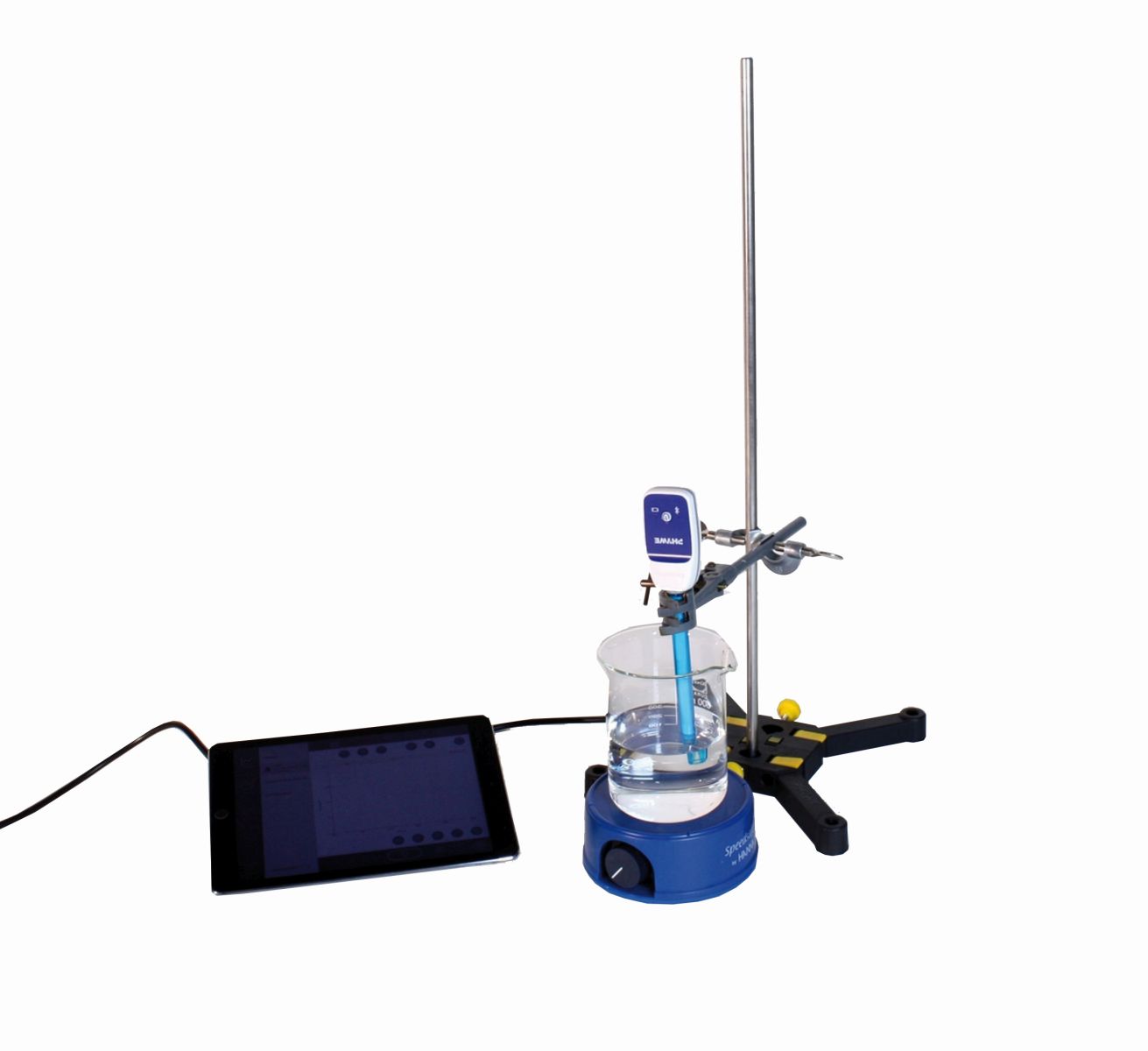Principle
The enzymatic hydrolysis of urea in aqueous solution yields carbon dioxide and ammonia. The ions of these compounds increase the conductivity of the solution. With conductivity measurements, the rate of urea hydrolysis by the enzyme urease can be determined. By adding a suitable inhibitor, the enzyme can be poisoned so that no substrate is converted.
Benefits
- Especially understandable and didactically prepared description of the experiment (reference to everyday life etc.) including protocol questions
- Future-oriented teaching: Integration into digital science lessons with tablets or smartphones
- Increased motivation of students by using the intuitive measureAPP
- Increased media competence
- Compact, easily transportable experimental set-up
- Suitable for demo experiments and practical training
- Flexible test execution thanks to wireless data transmission
Tasks
- Determination of the rate of urea hydrolysis by measuring the conductivity
- Poisoning of the enzyme by addition of a suitable inhibitor
Learning objectives
- Poisoning of enzymes
- Enzymatic urea hydrolysis
- Urea poisoning by silver nitrate
- Conductivity measurement


